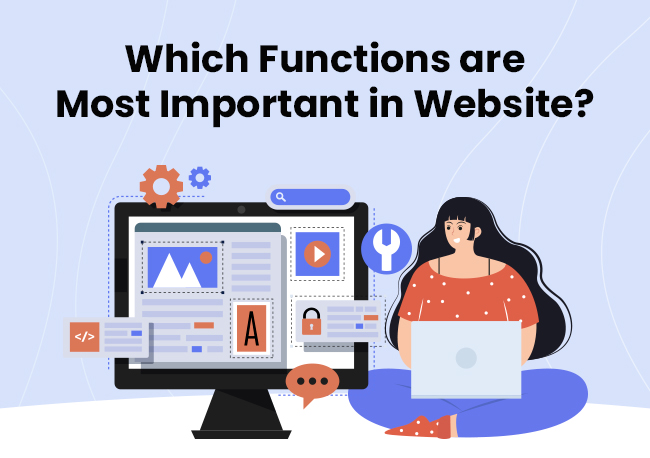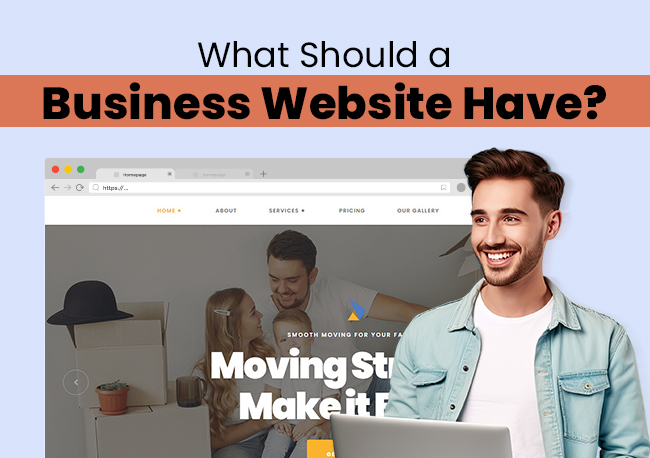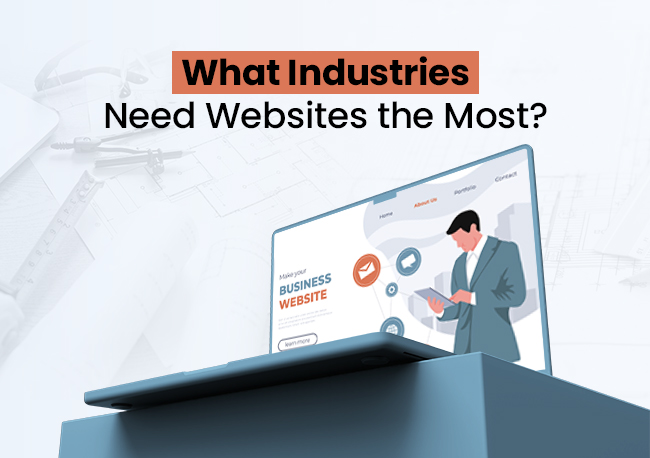An eCommerce website is an online store through which you sell goods or services on the internet. It is a store that showcases and sells products online. Being available on the internet has become very useful and mandatory for growth in this age of Information technology. When you are available on the internet, you are just a search away from the world who wants your products or services.
But why is it so important to be available on the internet?
Why eCommerce is important?
As we just discussed, being on the internet or, in a more convenient sentence, having an eCommerce website makes you available to anybody in just one search or click. eCommerce increases the reach and visibility of your business globally.
Let’s assume, you own a store in your locality and it is the number one store in the area for the products or services you sell. If anyone from outside the area wants to buy your product, they’ll have to drive down to your physical store and buy it from there, but this also is only possible for towns neighboring your locality at most. Limited reach strangles the possibility of brand building.
On the other hand, if you were present online as well as offline through your eCommerce website, any consumer around the globe would have been able to order from you and get familiar with the quality you offer. You would have increased sales of the products and the reach of your business would have been unlimited. You could have built a brand. Sure, it isn’t easy to survive on the internet with so many other options available, but easy things don’t make you exceptional.
You can choose either growth or comfort. With good quality products or services, you can build a positive reputation for yourself and eventually establish a brand.
If you want to start a new business using an eCommerce website, it’s also a great idea that will save the immediate need for a large inventory. You can have a limited inventory and still succeed in business if you are going for an eCommerce business. The capital investment is very low compared to any offline store and the reach of an online store is a lot more than that of an offline store. You can target a much larger audience online than offline.
The online business industry is booming. eCommerce is the future, more than 60% of the world population is searching for products or services on the internet today. An eCommerce website will help you grow your business exponentially.
Already running an offline business?
If you are already running an offline business and now thinking of migrating to online as well then just do it. It will help your local business become a global brand.
We are now going to discuss a step-by-step method to create an eCommerce store, but if you already are running a business, a few steps do not apply to you. For example, one of the steps is ‘Discovering the product to sell’, this will not apply to you because you already are selling a product offline and don’t need to discover another product. And also, you may not need to search for a domain name, you can make your offline business name your domain name if it is available.
As we have now discussed all the aspects, let us move forward to build an eCommerce website.
Also Read: What Are The Benefits Of A Website For Small Businesses
Building an eCommerce Website
1. Discover your HERO
First things first, you need to find the hero of your story. If you are planning to open an eCommerce store for a long time, you may already have the product you want to sell. It can be a unique product or it can be something you buy from a wholesaler and then sell at a higher price.
2. Research. Research. Research
After finding the product, the next step is to research it. Is the niche in which the product lies oversaturated or competitive or trendy? Is your price competitive? To do the research, you can always go to other established eCommerce websites like Amazon, Flipkart, eBay, etc., and search for the product and see if it’s trending or in the best-sellers.
3. Map out the Hurdles you may face
Think about the challenges you may face while running an eCommerce store. The shipping costs, low stocks, late deliveries, returned orders, payment disputes, crashing of your site (don’t overestimate your growth but always consider it a possibility), etc. Map out all the hurdles you may face and the solutions to them so that you have a plan of action ready when the challenge arises.
Also Read: Cheapest Way To Start A Website
4. Find a Domain, Name the STORY
You have discovered the hero of your story, the product you want to sell. The next thing you need to do is to think about an appropriate domain name for your website. It’s really important to have a domain name for your business that represents the purpose of your website with clarity. Also don’t forget about creating a modern logo, that will show from the first sight, what is your product. Search if the name is available, and if it is, register it with a good domain registrar. If not, you can always choose something better and register it with a registrar.
Also Read: Top 13 Techniques To Find Creative Domain Names For Your Business.
5. Determine the Right PRICE
Pricing is one of the most essential elements in the success of your eCommerce store. Determine the suitable price range for your product, if you set the price too low, you may lose money and if you set the price too high, you may not acquire more than a few customers.
To determine the right price for your product, calculate all of your business costs, like material costs, web hosting costs, Taxes, Shipping costs, Commission of payment processing services, marketing costs, etc. Add all the costs and the profit you would like to earn through the product. Always research your competitors’ prices of the same product to make your pricing competitive.
6. Shipping options
Making sure your product gets to the customer safe and sound is very important for a satisfying and fulfilling experience for the customer and the success of your business. While you can opt to pass off the shipping costs onto the customers, it is not a good practice and is not recommended. Most of the customers leave their products in the cart and never order them due to the high shipping and handling costs, this directly negatively affects your business.
We recommend you offer free shipping on all orders to all locations and add the cost to the price of the product or you can waive off the shipping charges if a customer orders for or more than a certain amount. Both of these strategies will attract more customers and help in the growth of your business.
7. Strategize
Plan your actions. Prepare a good strategy to run your business, anticipate your growing needs and upcoming challenges and work on solutions to tackle them. An idiot with a plan will defeat a genius without a plan. Always be ready with other options for your shipping, raw material, etc. so that if any problem arises regarding them, you can easily switch to another. Always hope for the best, prepare for the worst.
You have successfully prepared the game plan, now it’s time for you to create the eCommerce store.
eCommerce Setup
8. Find the eCommerce Platform
You have two options to choose from here, you can either opt for an eCommerce marketplace like Amazon, Flipkart, eBay, etc. to sell your products, or you can build your eCommerce website and start selling your product through that. If you choose to build your website, there are a few eCommerce software you can choose from, like Shopify, eBay, Wix, Squarespace, BigCommerce, etc. If you want to create a feature-rich eCommerce website, you will need to select a dedicated eCommerce development agency.
All of the software comes with its unique features, choose a platform according to your need. They all do the same work; it comes down to your specific needs and preference when choosing one.
Also Read: 7 Best CMS For Building An ECommerce Website
9. Select the best Hosting company
Hosting is the most important thing for a website to be seamless on the internet. There are various hosting companies providing their services on the internet, make sure to choose the best from them. Analysis as much as you can, read testimonials of previous clients of the company, compare them with each other and find out the best web hosting for your website. Hosting can be the deciding factor for the success of your website.
Also Read: 5 Things Small Business Should Know About Web Hosting
10. Start building your website
Prepare a rough framework and interface for the website you want to build. Start creating attractive product pages and writing attractive copies and detailed descriptions for your products. Use attractive product photos and include keywords in the description on the product pages. You can choose a premade theme from a catalog of themes from the connective eCommerce site builder you are using to make this process quick and easy.
Your website should include a Home Page, About Page, Contact Page, Customer query, and support Page. You can also include a blog page to keep your customers updated about upcoming products or news about your brand, etc. You can incorporate different apps and plugins into your website to make the most out of it.
Also Read: Website Development Checklist To Help Create Your First Website
11. SSL is a must
Don’t forget to install an SSL certificate on your website to secure and protect it from scammers, spammers, and hackers. An SSL certificate provides security to your website and a secured website build credibility and helps improve SEO.
Also Read: 9 Types Of SSL Certificates – Make The Right Choice
12. Add your product
The next step is to add your product to the home page and make separate pages for your products. A separate product page includes the rating, review, and testimonials of the product, being transparent with your customers builds credibility and helps build a brand.
13. Payment Method
Setup payment method to collect payments from customers. You need to accept all kinds of payments be it credit cards, debit cards, net banking, etc. You can do this by utilizing a merchant account. Choosing a good and trustworthy payment processing company is important, almost every eCommerce builder has the supported company listed, do proper research and choose the suitable option for you.
14. A Great CLIMAX: Simple Checkout Process
Like the experience on the website, the exit from the website should also be seamless and simple. Creating a simple checkout experience will help you avoid cart abandonment. You can do so by, optimizing your checkout for all devices, being clear about the shipping costs and expected delivery time, enabling multiple item purchases at once, and sending cart abandonment emails to the customers who have left without completing their purchases.
Keep the number of steps to checkout as low as possible. A great checkout experience ensures customer loyalty.
We have successfully created an eCommerce website for you. But before publishing we must preview and test the website for any bugs and irregularities it may have that may come out irritating to customers.
Grand Finale
Preview and Testing
The last thing you should do before publishing your website is to preview and test it to make sure everything is working as it should, if something doesn’t work or the website doesn’t look good on other devices make the necessary changes before publishing to avoid customer dissatisfaction and time delay. The questions you should ask while testing your website are:
Also Read: Importance Of Mobile-Friendly Website & How Do You Make It?
1. Does Searching show the right products?
Ensure that the relevant products show up on SRP (Search Result page) when they are being searched for. While assessing the SRP, make sure the relevant products are being shown with correct product information like the right image, name, price, and customer ratings and reviews.
2. Do Sorting and Filter work correctly?
Make sure that when sorting is selected, the page adjusts to it. And when filters are added, the products being shown are according to the filters selected by the customer. Filter options are multi-select and sorting options are single-select, make sure they work that way by testing them. Also, make sure, that different pages show different products, i.e., no duplication of a product on multiple pages.
First test by separately sorting and filtering, and then by doing them together to check if they work properly.
3. Is creating an account and logging in easier and working properly?
Make sure creating an account is as easy as it can be so that the customer doesn’t get irritated while creating an account. After the creation, the customer should be able to log in at any stage of his purchasing journey. He should be able to log in when he opens the website, after the purchase before checkout, so that the experience is smooth.
Make sure to add the ‘Keep me logged in’ option, so that the customer can choose if they want to be kept logged in or they want the login session to end as soon as they close the website window. If this option works. Ensure that Logins and Logouts work and the account’s pages cannot be accessed after logout.
4. Does the shopping cart work properly?
Ensure that adding multiple products is possible, and the function of increasing and decreasing the quantity of the product is working properly. When the same item is added multiple times to the cart, it should be added as one and the quantity should be according to how many times it has been added, this makes the cart look organized.
5. Does the Payment gateway work properly?
Payments are an essential part of testing an eCommerce website. Ensure that all the types of payment you have added are acceptable and working safely. Ensure that the payment gateway is not storing any payment details and it is, is PCI compliant and storing them safely.
6. Are the post-purchase functions good to go?
After the purchase, make sure all the post-purchase functions are working properly. If the customer wants to cancel the order, change the billing or shipping address, modify the quantity, etc. they should be able to do it easily. Make sure the recommended products are relevant and related to the products just ordered. Ensure that the product tracking option is working properly.
Start promoting your products
Publish your website and start promoting your products. Promotion and marketing are very important for the visibility of your products and implement a good marketing strategy. Some of the best ways to market are Content marketing, Social Media Marketing, and paid promotions. Make people realize the need for your product in their life, and tell them how your product makes their life easier.
Promote your product on Facebook, Instagram, Twitter, and other social media platforms to drive traffic to your website and gain traction.
Conclusion
Setting up your eCommerce website is not very difficult. You just have to have the right strategy and great implementation. Everything takes time, so will the sales, be patient and keep doing the work with honesty and commitment.




